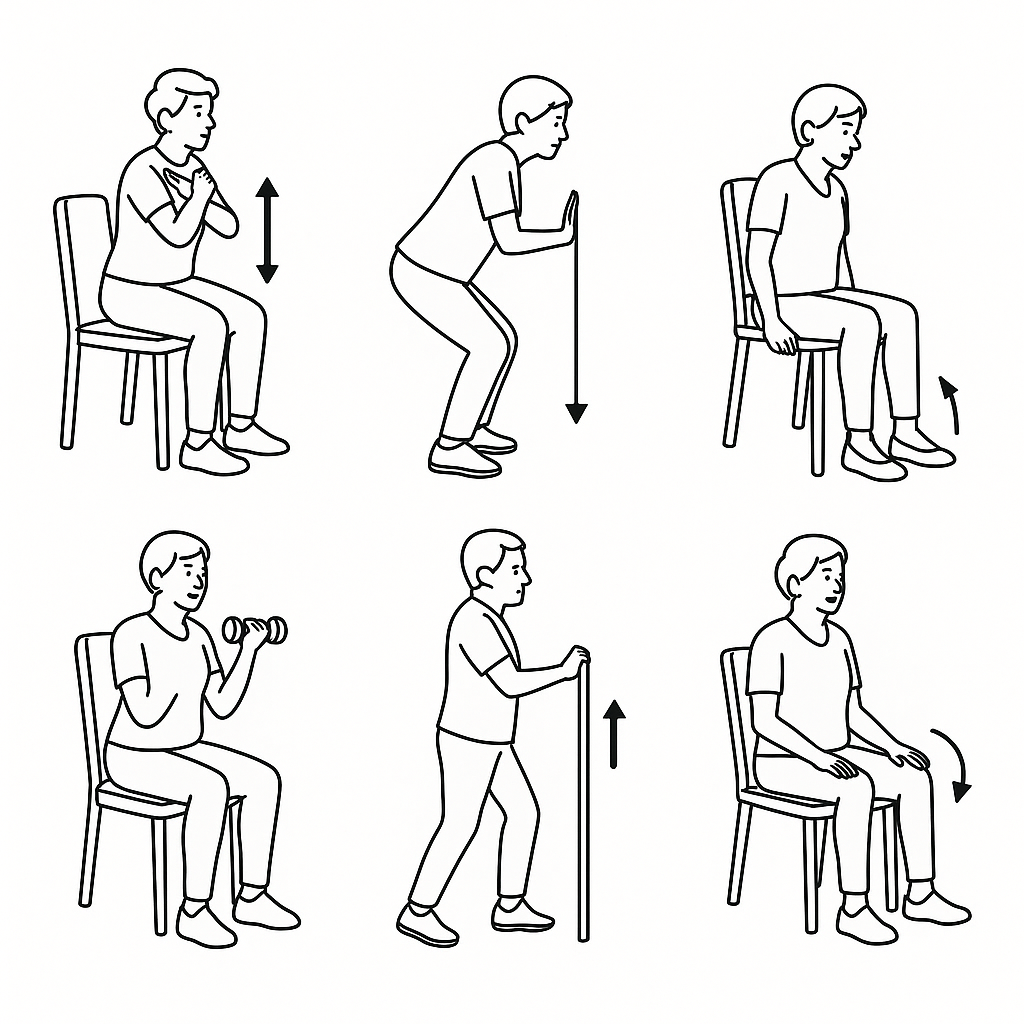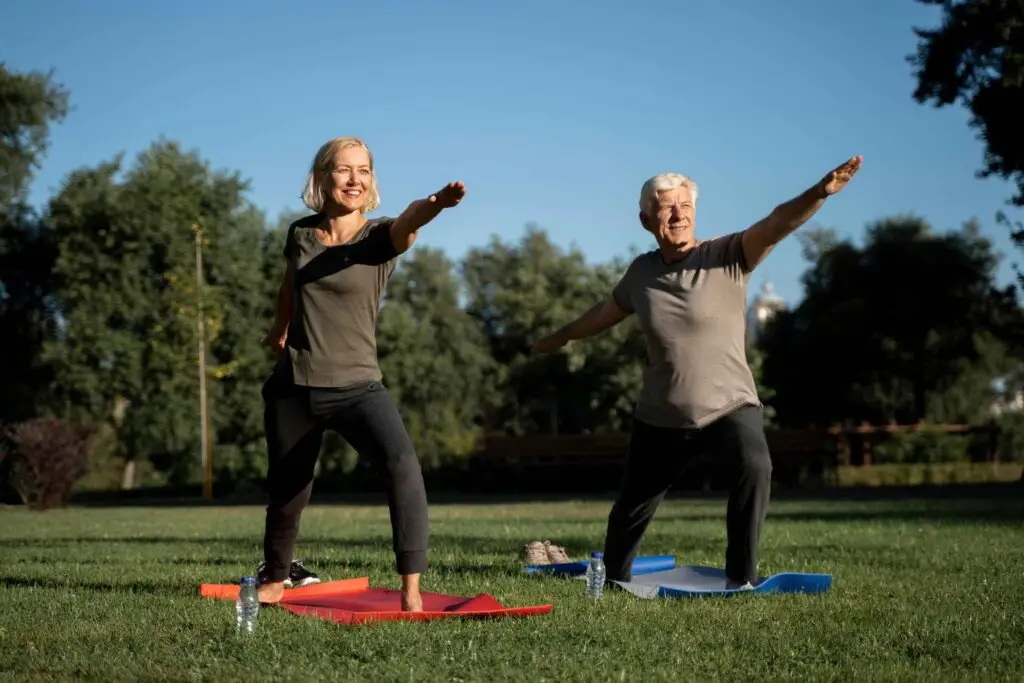Strength training isn’t just for athletes or bodybuilders—it’s one of the most powerful tools older adults can use to stay healthy, independent, and energetic. After age 50, natural muscle loss (sarcopenia) accelerates, balance may decline, and bones gradually weaken. Strength training directly addresses these challenges by rebuilding muscle, supporting bone density, and boosting overall function. Discover the benefits of strength training for older adults. Learn safe exercises, build confidence, and stay strong, healthy, and independent in 2025 and beyond.
It doesn’t require heavy barbells or intimidating gyms. With simple bodyweight moves, resistance bands, or light dumbbells, older adults can safely and effectively build strength at home.
This guide explains the benefits of strength training, safety considerations, practical exercise options, and how to start with a beginner-friendly routine.
1. Benefits of SStrength Training for Older Adults
Strength training offers benefits far beyond stronger muscles.
Prevents Muscle Loss: Regular training preserves muscle mass and prevents the weakness often linked with aging.
Supports Bone Health: Weight-bearing exercises reduce the risk of osteoporosis and fractures.
Improves Balance and Posture: Stronger core and leg muscles help prevent falls, one of the leading causes of injury in older adults.
Boosts Metabolism: Muscle tissue burns more calories at rest, supporting healthy weight management.
Enhances Daily Function: Tasks like climbing stairs, carrying groceries, or getting out of a chair become easier and safer.

2. Safety Considerations
Before starting any new exercise program, older adults should check with their healthcare provider, especially if they have arthritis, heart disease, or past injuries.
- Start Light: Begin with bodyweight or very light weights. Focus on mastering form first.
- Warm Up and Cool Down: Gentle marching, arm circles, and stretching reduce injury risk.
- Form Over Weight: Controlled movements matter more than heavy resistance.
- Use Support: Chairs, walls, or railings can provide stability.
- Listen to the Body: Sharp pain is a signal to stop or modify. Muscle fatigue is expected, but joint pain is not.
3. Types of Strength Training for Seniors
There are many safe and adaptable ways to build strength.
Bodyweight Exercises: Chair squats, wall push-ups, and bridges strengthen major muscle groups without equipment.
Resistance Bands: Portable, affordable, and gentle on joints, bands can target both upper and lower body.
Free Weights: Light dumbbells or kettlebells add resistance for arm curls, shoulder presses, and weighted squats.
Machines: If training in a gym, machines guide movement and add safety, especially for beginners.
Functional Training: Using household items or practicing movements like standing from the floor mimics real-life tasks.
4. Sample Beginner Routine
A balanced beginner routine can be done 2–3 days per week, with rest days in between. Aim for 1–2 sets of 8–12 repetitions per exercise.
Sit-to-Stand (Lower Body): Begin seated in a sturdy chair, stand up without using hands if possible, then sit back slowly. Builds leg and hip strength.
Wall Push-Ups (Upper Body): Stand facing a wall, place hands shoulder-width apart, and bend elbows to bring chest toward the wall. Push back. Strengthens chest, arms, and shoulders.
Seated Band Rows (Back): Sit tall with legs extended, loop a band around feet, and pull toward the body. Targets upper back and posture.
Overhead Dumbbell Press (Shoulders): With light dumbbells, press arms overhead and slowly lower. Builds shoulder and arm strength.
Standing Calf Raises (Balance & Legs): Hold a chair for support, rise up onto toes, pause, and lower slowly.
Core Seated Marches: Sit tall in a chair and lift knees alternately. Engages core without strain.
Rest 30–60 seconds between exercises. Begin with 1 set, and increase to 2–3 sets as comfort improves.
5. Progression Over Time
Progress should be gradual and tailored to comfort level.
- Increase resistance by using slightly heavier weights or tighter bands.
- Add sets or repetitions once the current routine feels easy.
- Track effort using a 1–10 scale (RPE). Aim for a 5–7, where the exercise feels challenging but manageable.
- Change up exercises every 6–8 weeks to keep progress steady and prevent plateaus.
6. Accessibility and Modifications
Strength training can be adapted for nearly everyone.
- Chair-Assisted Moves: Sit-to-stand, seated presses, and band pulls for those with balance concerns.
- Household Weights: Soup cans or water bottles make great starter weights.
- Short Sessions: Even 10–15 minutes can provide benefits, especially for beginners.
- Joint-Friendly Options: Gentle band work and supported bodyweight moves help those with arthritis or joint replacements.
7. Frequently Asked Questions (FAQs)
How often should seniors lift weights?
Two to three sessions per week, with at least one rest day in between, is ideal.
Is strength training safe with osteoporosis?
Yes, when done carefully. Weight-bearing movements are recommended, but avoid high-impact or twisting motions.
Do I need a gym membership?
No. Many effective exercises can be done at home with resistance bands, dumbbells, or bodyweight.
How long until I see results?
Improvements in strength and stamina can appear in as little as 4–6 weeks with consistent training.
Conclusion
Strength training is one of the most effective ways for older adults to maintain independence, reduce fall risk, and feel more capable in daily life. With light equipment, safe form, and gradual progression, it’s possible to gain confidence and strength at any age. The key is consistency—small steps add up to powerful long-term benefits.
Related Articles: Health & Wellness





